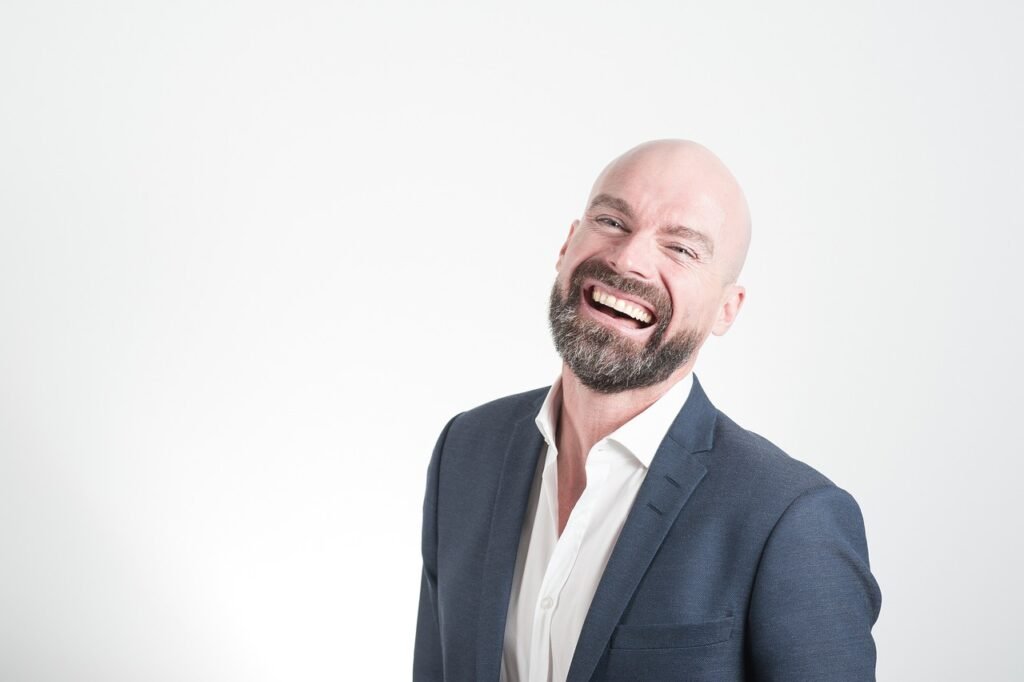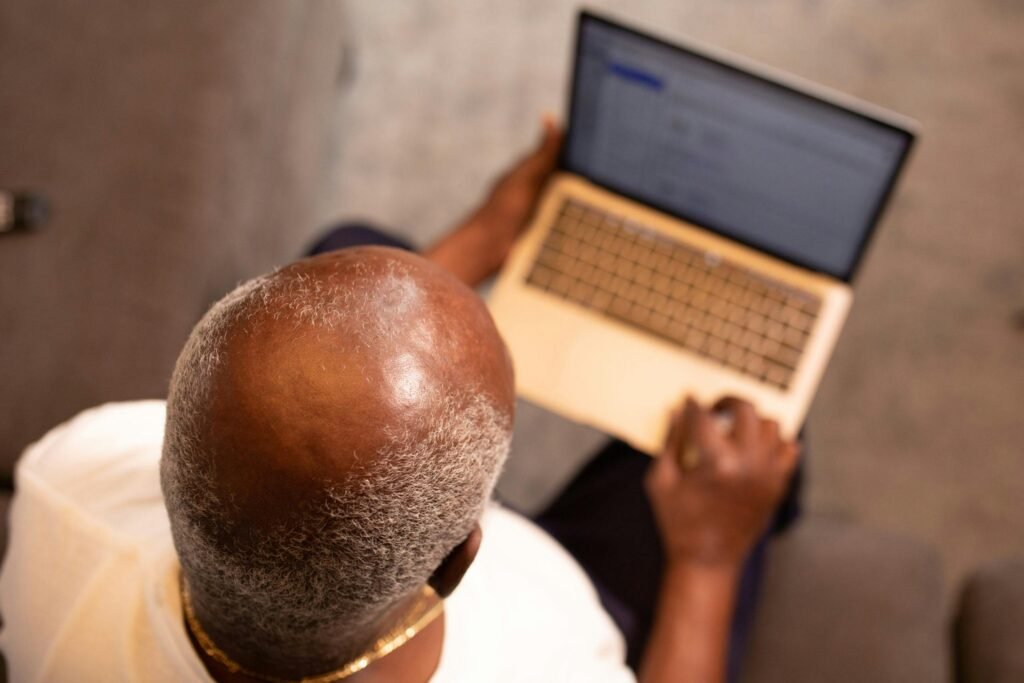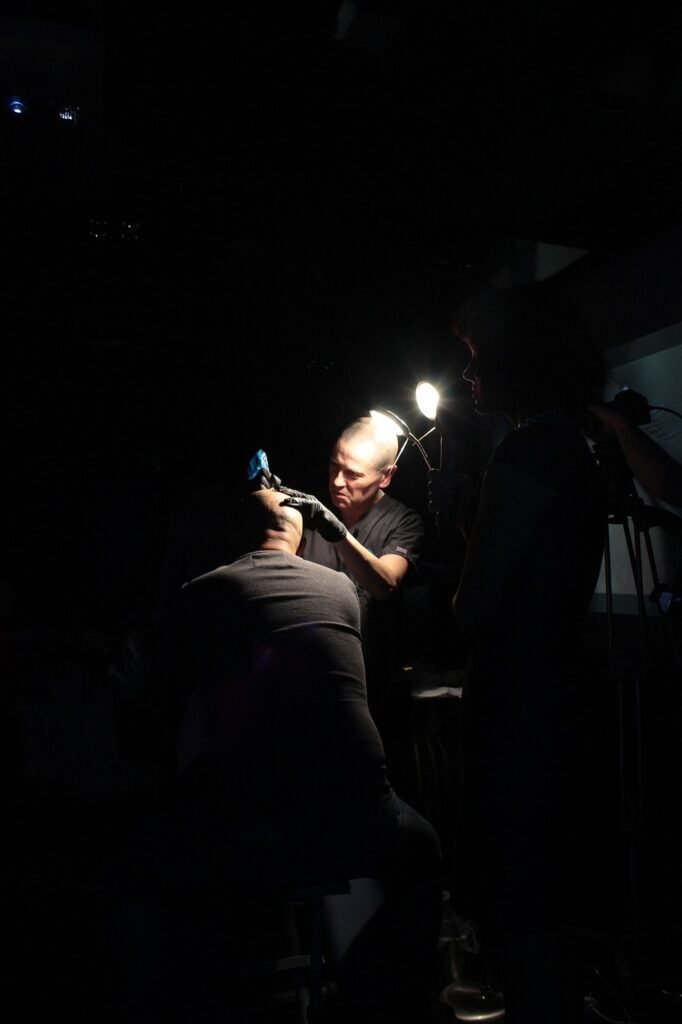
Table of Contents
Introduction
Brief Overview of Androgenic Alopecia
Androgenic alopecia, commonly known as male or female pattern baldness, is the most prevalent form of hair loss affecting millions of individuals worldwide. This condition is characterized by a progressive thinning of hair on the scalp, leading to partial or complete baldness over time. It is primarily influenced by genetic factors and hormonal changes, particularly the action of androgens, which are male hormones that also exist in females. While it can begin as early as the teenage years, the likelihood of developing androgenic alopecia increases with age.
Importance of Addressing Hair Loss Issues
Hair loss, especially when it occurs prematurely or unexpectedly, can have profound psychological and emotional impacts. It often affects self-esteem, confidence, and social interactions, leading to stress and anxiety. Addressing hair loss issues is crucial not only for aesthetic reasons but also for overall mental well-being. Early diagnosis and treatment can help manage the condition effectively, potentially slowing its progression and improving the quality of life for those affected.
What is Androgenic Alopecia?

Definition and Medical Terminology
Androgenic alopecia, also known as androgenetic alopecia, is a common form of hair loss in both men and women. It is often referred to as male pattern baldness when it occurs in men and female pattern hair loss when it occurs in women. The condition is characterized by a gradual thinning of hair, which typically follows a recognizable pattern. In men, this pattern usually starts with a receding hairline and thinning at the crown, eventually leading to partial or complete baldness. In women, it generally presents as a diffuse thinning over the top of the scalp while maintaining the frontal hairline.
The term “androgenic” refers to the involvement of androgens, which are male hormones like testosterone and dihydrotestosterone (DHT). These hormones play a significant role in hair growth and loss. “Alopecia” is a medical term for hair loss. Together, androgenic alopecia describes hair loss that is influenced by androgens and genetic predisposition.
Difference Between Androgenic Alopecia and Other Types of Hair Loss
Androgenic alopecia differs from other types of hair loss in several key ways:
Pattern and Progression:
- Androgenic Alopecia: Follows a specific pattern of hair thinning and loss. In men, it often starts with a receding hairline and thinning at the crown. In women, it usually manifests as diffuse thinning on the top of the scalp.
- Alopecia Areata: Characterized by sudden, patchy hair loss that can occur anywhere on the body. It is an autoimmune condition where the immune system attacks hair follicles.
- Telogen Effluvium: Involves diffuse hair shedding across the entire scalp, often triggered by stress, illness, or hormonal changes. It is usually temporary and reversible.
- Traction Alopecia: Caused by prolonged tension on the hair, often due to tight hairstyles. It leads to hair loss in the areas under stress, such as the hairline or crown.
Underlying Causes:
- Androgenic Alopecia: Primarily driven by genetic factors and hormonal influences, particularly androgens.
- Alopecia Areata: An autoimmune disorder with no clear genetic or hormonal link.
- Telogen Effluvium: Triggered by external factors like stress, nutritional deficiencies, or medical conditions.
- Traction Alopecia: Resulting from physical stress on the hair follicles due to certain hairstyles or practices.
Treatment Approaches:
- Androgenic Alopecia: Often treated with medications like Minoxidil and Finasteride, as well as hair transplant surgery and lifestyle changes.
- Alopecia Areata: May be treated with corticosteroids, immunotherapy, or other medications to suppress the immune response.
- Telogen Effluvium: Typically resolves on its own once the underlying cause is addressed.
- Traction Alopecia: Managed by changing hairstyles and avoiding practices that put stress on the hair.
Knowing these differences is crucial for accurate diagnosis and effective treatment of hair loss conditions.
Causes of Androgenic Alopecia
Genetic Factors
Genetics play a pivotal role in the development of androgenic alopecia. The condition is often inherited, meaning it can be passed down from one generation to the next. If you have close relatives, such as parents or siblings, who have experienced androgenic alopecia, you are more likely to develop it as well. The genetic predisposition affects how your hair follicles respond to androgens, particularly dihydrotestosterone (DHT). Certain genes make hair follicles more sensitive to DHT, leading to the miniaturization of hair follicles and, consequently, hair thinning and loss.
Hormonal Influences (Role of Androgens)
Androgens, particularly testosterone and its more potent derivative dihydrotestosterone (DHT), are central to the development of androgenic alopecia. These hormones are present in both men and women, although in different amounts. DHT binds to receptors in hair follicles, causing them to shrink over time. This process, known as follicular miniaturization, results in shorter, finer hairs and eventually leads to the cessation of hair growth in affected areas. The sensitivity of hair follicles to DHT is largely determined by genetic factors, which is why androgenic alopecia often runs in families.
Environmental Factors
While genetic and hormonal factors are the primary drivers of androgenic alopecia, environmental factors can also influence the condition. These factors may not directly cause androgenic alopecia but can exacerbate the condition or accelerate its progression. Some of the key environmental factors include:
Stress: Chronic stress can lead to hormonal imbalances that may worsen hair loss. Stress can also trigger conditions like telogen effluvium, which can compound the effects of androgenic alopecia.
Diet and Nutrition: Poor nutrition, particularly deficiencies in essential vitamins and minerals like iron, zinc, and vitamin D, can negatively impact hair health. A balanced diet rich in nutrients supports overall hair growth and health.
Lifestyle Choices: Habits such as smoking and excessive alcohol consumption can impair blood circulation and nutrient delivery to hair follicles, potentially worsening hair loss.
Hair Care Practices: Frequent use of harsh hair treatments, excessive heat styling, and tight hairstyles can damage hair and contribute to hair loss.
Medical Conditions and Medications: Certain medical conditions, such as thyroid disorders and polycystic ovary syndrome (PCOS), can influence hormone levels and contribute to hair loss. Additionally, some medications, including those for acne, depression, and high blood pressure, can have side effects that include hair loss.
Understanding the interplay between genetic, hormonal, and environmental factors is crucial for managing androgenic alopecia effectively. By addressing these factors, individuals can take proactive steps to slow the progression of hair loss and maintain healthier hair.

Symptoms and Diagnosis
Early Signs and Symptoms
Androgenic alopecia typically begins with subtle changes that gradually become more noticeable over time. Recognizing these early signs can help in seeking timely intervention:
- Gradual Thinning of Hair: One of the first signs is a gradual thinning of hair on the scalp. In men, this often starts with a receding hairline and thinning at the crown. Women may notice a widening part and thinning hair on the top of the scalp.
- Receding Hairline: Men may observe their hairline moving back, forming an “M” shape. This is a hallmark of male pattern baldness.
- Bald Spots: Small bald spots may appear, particularly on the crown of the head.
- Increased Hair Shedding: You might notice more hair falling out during brushing or washing. This can be an early indicator of androgenic alopecia.
For more detailed information on the early signs and symptoms, you can refer to this Cleveland Clinic article1.
Diagnostic Methods
Diagnosing androgenic alopecia involves a combination of clinical evaluation and, in some cases, additional tests to rule out other causes of hair loss:
- Physical Examination: A dermatologist will examine your scalp to assess the pattern and extent of hair loss. This visual inspection is often sufficient to diagnose androgenic alopecia.
- Medical History: Your doctor will take a detailed medical history to understand any underlying conditions, family history of hair loss, and other relevant factors.
- Scalp Biopsy: In some cases, a small sample of scalp tissue may be taken for microscopic examination. This helps to confirm the diagnosis and rule out other conditions like alopecia areata.
- Blood Tests: Blood tests may be conducted to check for hormonal imbalances, thyroid issues, or nutritional deficiencies that could contribute to hair loss.
- Trichoscopy: This non-invasive technique involves using a dermatoscope to examine the scalp and hair follicles closely. It helps in identifying characteristic features of androgenic alopecia, such as miniaturized hair follicles.
For a comprehensive overview of diagnostic methods, you can check out this UpToDate article2.
If you notice any of these symptoms, it’s advisable to consult a healthcare professional for an accurate diagnosis and appropriate treatment plan.
Impact on Quality of Life
Psychological and Emotional Effects
Androgenic alopecia can have profound psychological and emotional impacts on individuals. Hair is often closely tied to one’s identity and self-image, and losing it can lead to a range of emotional responses:
- Self-Esteem and Confidence: Many people experiencing hair loss report a significant drop in self-esteem and confidence. They may feel less attractive or youthful, which can affect their overall self-worth.
- Anxiety and Depression: The stress of losing hair can lead to anxiety and, in some cases, depression. Individuals may become preoccupied with their appearance, leading to persistent worry and sadness.
- Body Image Issues: Hair loss can alter one’s perception of their body image, making them feel less comfortable in social situations or avoiding activities they once enjoyed.
- Emotional Distress: The emotional toll of hair loss can be substantial, leading to feelings of frustration, helplessness, and even embarrassment.
For more insights into the psychological effects of hair loss, you can refer to this American Academy of Dermatology article.
Social Implications
The social implications of androgenic alopecia can be equally significant, affecting various aspects of an individual’s life:
- Social Interactions: People with androgenic alopecia may feel self-conscious in social settings, leading to reduced social interactions. They might avoid gatherings, parties, or other events where they feel their hair loss will be noticed.
- Professional Life: Hair loss can impact professional life, especially in industries where appearance is considered important. Individuals may feel less confident in job interviews, presentations, or client meetings.
- Relationships: Hair loss can affect personal relationships, including romantic ones. Individuals may fear rejection or feel less attractive to their partners, which can strain relationships.
- Public Perception: Society often places a high value on physical appearance, and hair loss can lead to negative judgments or stereotypes. This can result in feelings of isolation or being misunderstood.
Treatment Options

FDA-Approved Treatments (Minoxidil, Finasteride)
Minoxidil: Minoxidil, commonly known by the brand name Rogaine, is a topical treatment approved by the FDA for both men and women. It works by stimulating hair follicles and increasing blood flow to the scalp, which can promote hair growth. Minoxidil is available in 2% and 5% concentrations and can be applied as a liquid or foam. Consistent use is necessary to maintain results, and it may take several months to see noticeable improvement1.
Finasteride: Finasteride, sold under the brand name Propecia, is an oral medication approved by the FDA for use in men. It works by inhibiting the conversion of testosterone to dihydrotestosterone (DHT), a hormone that contributes to hair follicle miniaturization. By reducing DHT levels, finasteride can slow hair loss and promote regrowth. It is typically taken once daily, and like minoxidil, it requires ongoing use to sustain benefits1.
Non-FDA-Approved Treatments
Laser Therapy: Low-level laser therapy (LLLT) involves using laser devices to stimulate hair growth. These devices, such as laser combs or helmets, emit light that penetrates the scalp and enhances cellular activity in hair follicles. While not FDA-approved specifically for androgenic alopecia, some studies suggest that LLLT can be effective in promoting hair growth2.
Microneedling: Microneedling involves using a device with fine needles to create tiny punctures in the scalp. This process can stimulate collagen production and enhance the absorption of topical treatments like minoxidil. Some research indicates that microneedling, when combined with other treatments, can improve hair density and thickness3.
Platelet-Rich Plasma (PRP): PRP therapy involves drawing a small amount of the patient’s blood, processing it to concentrate the platelets, and then injecting the PRP into the scalp. Platelets contain growth factors that can promote healing and stimulate hair growth. Although not FDA-approved for androgenic alopecia, PRP has shown promise in clinical studies and is increasingly used as an off-label treatment3.
Natural Remedies and Lifestyle Changes
Scalp Massage: Regular scalp massage can improve blood circulation to the hair follicles, potentially promoting hair growth. Using essential oils like rosemary or lavender during the massage may enhance the benefits4.
Diet and Nutrition: A balanced diet rich in vitamins and minerals is essential for healthy hair. Nutrients such as iron, zinc, vitamin D, and biotin play crucial roles in hair growth. Incorporating foods like leafy greens, nuts, seeds, and lean proteins can support overall hair health4.
Stress Management: Chronic stress can exacerbate hair loss. Practices such as yoga, meditation, and regular exercise can help manage stress levels and improve overall well-being4.
Avoiding Harsh Hair Treatments: Limiting the use of heat styling tools, chemical treatments, and tight hairstyles can prevent further damage to hair and scalp. Opting for gentle hair care products and techniques can help maintain hair health4.
Herbal Supplements: Some herbal supplements, such as saw palmetto and ginseng, are believed to support hair growth by reducing DHT levels or improving circulation. However, it’s important to consult with a healthcare provider before starting any new supplement regimen4.
By exploring a combination of FDA-approved treatments, non-FDA-approved therapies, and natural remedies, individuals with androgenic alopecia can find a comprehensive approach to managing their condition and promoting hair growth.
Prevention Strategies
Early Intervention
Early intervention is crucial in managing androgenic alopecia effectively. The sooner you recognize the signs of hair thinning and seek treatment, the better your chances of slowing down or even halting the progression of hair loss. Early intervention can include:
- Consulting a Dermatologist: At the first signs of hair thinning, it’s advisable to consult a dermatologist who can diagnose the condition accurately and recommend appropriate treatments.
- Starting Treatment Early: FDA-approved treatments like Minoxidil and Finasteride are more effective when started early. These treatments can help maintain existing hair and promote regrowth.
- Monitoring Hair Health: Regularly monitoring your hair health and noting any changes can help in taking timely action. Keeping a hair diary can be useful in tracking progress and treatment effectiveness.
For more information on early intervention strategies, you can refer to this Verywell Health article1.
Healthy Lifestyle Choices
Adopting a healthy lifestyle can significantly impact the health of your hair and potentially slow the progression of androgenic alopecia. Key lifestyle choices include:
- Balanced Diet: A diet rich in vitamins and minerals, such as iron, zinc, vitamin D, and biotin, supports hair health. Incorporate foods like leafy greens, nuts, seeds, and lean proteins into your diet.
- Regular Exercise: Exercise improves blood circulation, including to the scalp, which can promote healthy hair growth. It also helps in managing stress, which can exacerbate hair loss.
- Stress Management: Chronic stress can contribute to hair loss. Practices like yoga, meditation, and mindfulness can help manage stress levels.
- Avoiding Harmful Habits: Smoking and excessive alcohol consumption can negatively impact hair health. Reducing or eliminating these habits can benefit your overall well-being and hair health.
For more tips on maintaining a healthy lifestyle to prevent hair loss, check out this Cleveland Clinic article2.
Regular Medical Check-Ups
Regular medical check-ups are essential for early detection and management of androgenic alopecia. These check-ups can help in:
- Monitoring Hormone Levels: Hormonal imbalances can contribute to hair loss. Regular blood tests can help monitor hormone levels and identify any imbalances that need to be addressed.
- Assessing Nutritional Status: Nutritional deficiencies can impact hair health. Regular check-ups can help identify and correct any deficiencies.
- Evaluating Treatment Effectiveness: Regular visits to your dermatologist can help assess the effectiveness of ongoing treatments and make necessary adjustments.
- Preventive Care: Regular check-ups allow for preventive care measures, ensuring that any potential issues are addressed before they become significant problems.
For more insights on the importance of regular medical check-ups, you can refer to this Donovan Hair Clinic article3.
By incorporating early intervention, healthy lifestyle choices, and regular medical check-ups into your routine, you can take proactive steps to manage androgenic alopecia and maintain healthier hair.
Latest Research and Advances

Recent Studies and Findings
Recent research has significantly advanced our understanding of androgenic alopecia, shedding light on its complex pathophysiology and potential new treatments:
Genetic and Molecular Insights: Studies have identified new genetic markers associated with androgenic alopecia, enhancing our understanding of its hereditary nature. Research has also focused on the role of stem cells in hair follicle regeneration, offering promising avenues for future therapies1.
Hormonal Pathways: Investigations into the hormonal pathways involved in androgenic alopecia have highlighted the critical role of androgens, particularly dihydrotestosterone (DHT). Understanding these pathways has led to the development of targeted treatments aimed at reducing DHT levels2.
Non-FDA-Approved Treatments: Various non-FDA-approved treatments have shown efficacy in clinical trials. For instance, low-level laser therapy (LLLT) and platelet-rich plasma (PRP) therapy have demonstrated positive results in promoting hair growth and improving hair density3.
Comorbidities and Early-Onset AGA: Research has also explored the association between androgenic alopecia and other health conditions, such as metabolic syndrome and cardiovascular diseases. Early-onset androgenic alopecia has been linked to higher risks of these comorbidities, emphasizing the need for comprehensive health assessments in affected individuals4.
For more detailed information on recent studies, you can refer to this Springer article2.
Future Directions in Treatment and Prevention
The future of androgenic alopecia treatment and prevention looks promising, with several innovative approaches under investigation:
Gene Therapy: Advances in gene editing technologies, such as CRISPR, hold potential for correcting genetic mutations associated with androgenic alopecia. This approach could offer a long-term solution by targeting the root cause of the condition1.
Stem Cell Therapy: Research into stem cell therapy aims to harness the regenerative capabilities of stem cells to promote hair follicle regeneration. This could lead to more effective and lasting treatments for hair loss1.
New Pharmacological Agents: Scientists are exploring new pharmacological agents that target specific pathways involved in hair loss. These include inhibitors of the androgen receptor and molecules that promote hair follicle cycling5.
Combination Therapies: Combining different treatment modalities, such as LLLT, PRP, and microneedling, is being investigated to enhance treatment efficacy. Multimodal approaches may offer synergistic benefits and improve patient outcomes3.
Personalized Medicine: The future of androgenic alopecia treatment may lie in personalized medicine, where treatments are tailored to an individual’s genetic makeup, hormonal profile, and specific needs. This approach could optimize treatment efficacy and minimize side effects6.
Preventive Strategies: Ongoing research is also focused on identifying preventive strategies, including lifestyle modifications and early interventions, to reduce the risk of developing androgenic alopecia. Understanding the environmental and lifestyle factors that contribute to hair loss can help in formulating effective prevention plans7.
For more insights into future directions in treatment and prevention, you can check out this MDPI article3.
Patient Stories and Testimonials
Real-Life Experiences
Hearing from individuals who have experienced androgenic alopecia can provide valuable insights and emotional support for those going through similar challenges. Here are a few real-life experiences:
Darren’s Journey: Darren first noticed his hair thinning in his mid-20s. Over the years, the thinning at his temples and crown became more noticeable, and by the time he hit 40, his hair loss was undeniable. The psychological impact was significant, affecting his confidence and social interactions. After trying various treatments with little success, Darren discovered CosmeRNA, a treatment that uses RNA interference technology. Within a few months, his hair shedding slowed, and his existing hair felt stronger. By the six-month mark, his hair was visibly thicker, and he experienced no unpleasant side effects1.
Female Pattern Hair Loss: A woman shared her experience with androgenic alopecia, which started after puberty and became more pronounced after menopause. She described the emotional toll of seeing her hair thin and the relief she felt upon finding effective treatments like minoxidil. Her story highlights the importance of understanding the condition and seeking appropriate medical advice2.
Success Stories and Challenges
Success stories and testimonials can inspire hope and provide practical advice for managing androgenic alopecia:
Success with Minoxidil: Many individuals have found success with minoxidil, an FDA-approved treatment. One patient reported that after consistent use, she noticed a significant reduction in hair loss and even some regrowth. The key to her success was persistence and following the treatment regimen as prescribed2.
Challenges with Treatment: Not all treatments work for everyone, and some patients face challenges in finding the right solution. One man shared his journey of trying various shampoos, over-the-counter treatments, and even considering hair transplant surgery. It wasn’t until he found a scientifically-backed solution that he saw real results. His story underscores the importance of patience and perseverance in finding an effective treatment1.
Emotional Resilience: Another patient emphasized the emotional resilience required to cope with hair loss. She found support through online communities and counseling, which helped her manage the psychological impact of androgenic alopecia. Her experience highlights the importance of seeking emotional support and connecting with others who understand the journey3.
These stories illustrate the diverse experiences of individuals with androgenic alopecia, from the initial shock of hair loss to the eventual discovery of effective treatments. They remind us that while the journey can be challenging, there is hope and support available.
For more patient stories and testimonials, you can explore this Mayo Clinic article2 and this Stages of Balding article3.
Conclusion
Summary of Key Points
Androgenic alopecia, commonly known as male or female pattern baldness, is a prevalent form of hair loss influenced by genetic and hormonal factors. Recognizing the early signs, such as gradual thinning and a receding hairline, is crucial for timely intervention. Various treatment options are available, including FDA-approved medications like Minoxidil and Finasteride, as well as non-FDA-approved therapies such as laser therapy, microneedling, and PRP. Additionally, adopting healthy lifestyle choices and regular medical check-ups can help manage and potentially slow the progression of hair loss. Recent research continues to advance our understanding and treatment of this condition, offering hope for more effective solutions in the future.
Encouragement for Seeking Professional Advice
If you are experiencing hair loss, it is important to seek professional advice from a dermatologist or healthcare provider. Early diagnosis and treatment can make a significant difference in managing androgenic alopecia and improving your quality of life. A healthcare professional can provide personalized recommendations based on your specific condition and needs, helping you navigate the various treatment options available. Remember, you are not alone in this journey, and support is available to help you maintain healthy hair and well-being.
FAQs
What is androgenic alopecia?
- Answer: Androgenic alopecia, also known as male or female pattern baldness, is a common form of hair loss influenced by genetic and hormonal factors. It typically presents as a receding hairline and thinning at the crown in men, and diffuse thinning on the top of the scalp in women1.
What causes androgenic alopecia?
- Answer: The primary causes are genetic predisposition and hormonal influences, particularly the action of dihydrotestosterone (DHT) on hair follicles. Environmental factors like stress and poor nutrition can also exacerbate the condition2.
How is androgenic alopecia diagnosed?
What treatments are available for androgenic alopecia?
- Answer: FDA-approved treatments include Minoxidil (topical) and Finasteride (oral). Other treatments like low-level laser therapy, microneedling, and platelet-rich plasma (PRP) therapy are also used, though they are not FDA-approved specifically for androgenic alopecia4.
Can androgenic alopecia be prevented?
- Answer: While it may not be entirely preventable due to its genetic nature, early intervention and healthy lifestyle choices can help manage and slow the progression of hair loss. Regular medical check-ups and stress management are also beneficial5.
Are there any natural remedies for androgenic alopecia?
- Answer: Natural remedies include scalp massages, a balanced diet rich in essential nutrients, and the use of herbal supplements like saw palmetto. However, their effectiveness varies, and it’s important to consult with a healthcare provider before starting any new treatment6.
Expert Answers and Advice
How effective are Minoxidil and Finasteride in treating androgenic alopecia?
- Expert Answer: Minoxidil and Finasteride are the most commonly prescribed treatments for androgenic alopecia. Minoxidil helps by stimulating hair follicles and increasing blood flow to the scalp, while Finasteride reduces DHT levels. Both treatments are effective in slowing hair loss and promoting regrowth, but they require consistent use to maintain results4.
What are the potential side effects of these treatments?
- Expert Answer: Minoxidil can cause scalp irritation, itching, and unwanted facial hair growth in some cases. Finasteride may cause sexual side effects, such as decreased libido and erectile dysfunction. It’s important to discuss potential side effects with your doctor before starting treatment4.
Is hair transplant surgery a viable option?
- Expert Answer: Hair transplant surgery can be an effective option for those with significant hair loss. It involves transplanting hair follicles from one part of the scalp to the thinning areas. The results are usually permanent, but the procedure can be costly and requires a recovery period5.
How can lifestyle changes impact androgenic alopecia?
- Expert Answer: Adopting a healthy lifestyle can positively impact hair health. This includes maintaining a balanced diet, managing stress, avoiding smoking and excessive alcohol consumption, and using gentle hair care practices. These changes can help support overall hair health and potentially slow the progression of hair loss6.
What should I do if I notice early signs of hair loss?
- Expert Answer: If you notice early signs of hair loss, such as thinning hair or a receding hairline, it’s important to consult a dermatologist or healthcare provider. Early intervention can help manage the condition more effectively and prevent further hair loss3.

